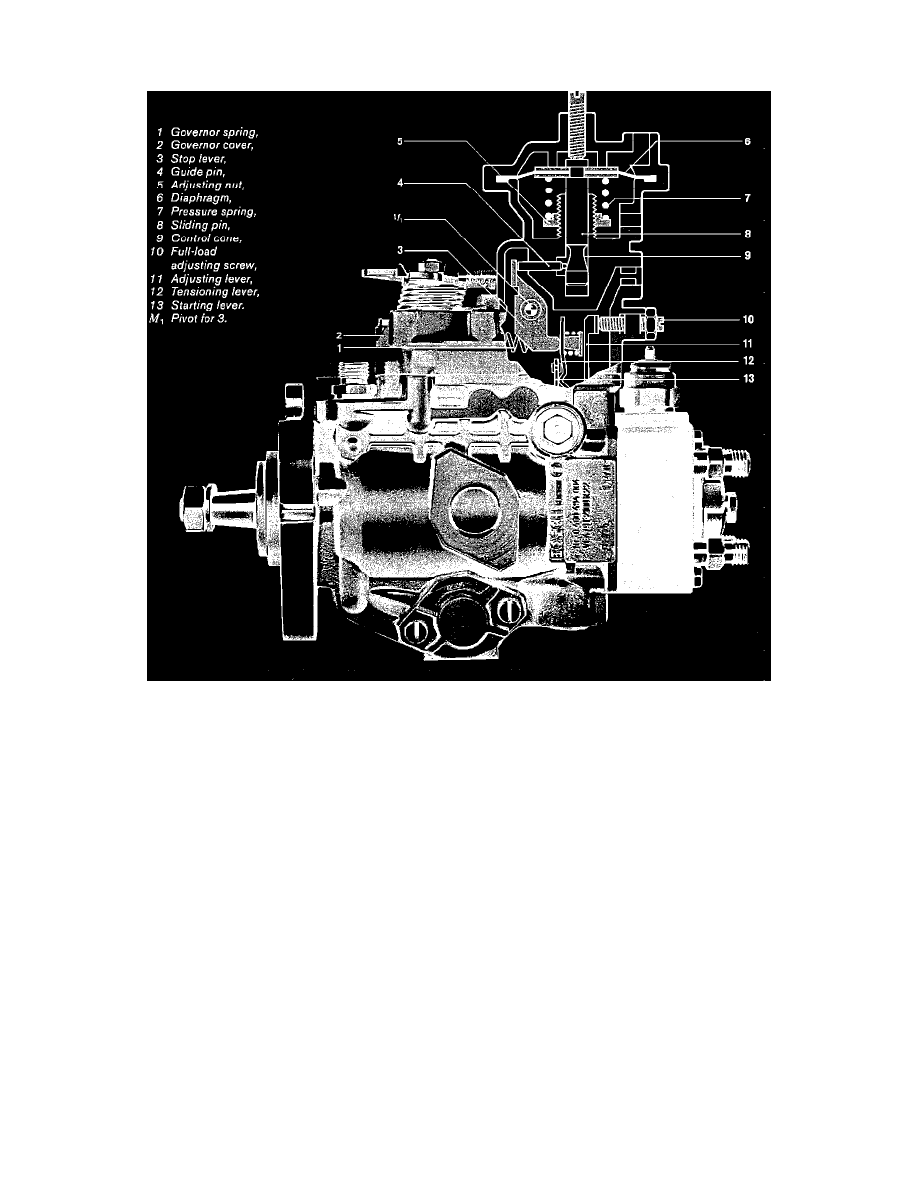Rabbit Hatchback L4-1588cc 1.6L DSL SOHC (1983)

Manifold Pressure Compensator (Lda)
Fig. 11 Cut Away View of the Manifold Pressure Compensator Mounted on the Injection Pump
The LDA, Fig. 11, is installed on the VE distributor pump's top side. At its top are a connection for manifold pressure and a relief bore. Its cavity is
divided by a diaphragm into two sealed chambers. A pressure spring acts on the diaphragm with one of its ends and is held by an adjusting nut on the
other; the nut provides for adjusting the spring preload. In turn, this adjustment matches LDA action to turbocharger pressure.
The diaphragm is connected to a sliding pin which has a conical control surface. A guide pin at right angles to the sliding pin's axis contacts the
conical surface and transfers the sliding pin's movements to the stop lever, which alters the full-load stop position. An adjusting screw at the top of the
LDA determines the sliding pin's initial position.
At low engine speeds, turbocharger pressure is insufficient to compress the spring and the diaphragm remains in its initial position. Once pressure
reaches a certain level, the diaphragm and sliding pin begin to move downward against spring pressure. In turn, in a pattern determined by the conical
control surface, the guide pin is moved and the stop lever pivots around M1, Fig. 11.
Because of tension from the governor spring, the tensioning and stop levers, guide pin, and control cone are effectively bound together; the tensioning
lever therefore follows the stop lever's movement. Starting and tensioning lever rotate around their common pivot and move the control collar in the
direction of greater pump delivery. Thus fuel delivery is increased in response to the greater air mass.
When turbocharger pressure falls, the spring under the LDA moves the sliding pin back upward, compensation action is reversed and fuel delivery is
reduced accordingly. Should the turbocharger fail, the LDA assume its initial position and the engine operates normally, without smoke. Full-load fuel
delivery is adjusted by the full-load stop screw in the governor cover.
The turbo boost enrichment is preset at the factory, and no adjustment is required. If the unit is faulty, it must be replaced. The only concern is to see
that the housing vent is open when installing a new pump or compensator.
Construction
